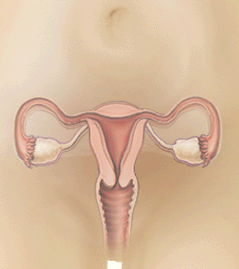What is PID?
PID is a serious infection that women can get in their reproductive organs. It most often starts in the fallopian tubes but may also involve the ovaries and the uterus. PID usually occurs when an infection of the cervix spreads upward through the uterus and into the fallopian tubes. PID can permanently damage the fallopian tubes. If you ever have PID, you will have a higher risk of ectopic pregnancy (pregnancy in the fallopian tube). You may also have difficulty getting pregnant later on.
How do you get PID?
Pelvic inflammatory disease is usually a sexually transmitted disease. But a girl who isn’t sexually active can also get PID. Usually, that happens when an infection spreads to the fallopian tubes from another infection in the belly such as a burst appendix.
The sexually transmitted diseases gonorrhea and chlamydia can become very severe and turn into PID.
Who can get PID?
Anybody can get it, but it’s more common among certain groups of people who:
- are young when they have intercourse for the first time
- are younger than 25
- are unmarried
- have no children
- have many sexual partners
- have had new sexual partners recently
What can I do to avoid PID?
You can lower your chances of getting PID by using condoms during intimate sexual contact and sexual intercourse. That’s because condoms keep the semen from entering your vagina. Semen contains the harmful organisms that cause infection.
How do I know if I have PID?
PID usually makes you feel very sick. You may get pain in your lower belly and a fever. You may also have abnormal vaginal discharge that has a different color or smell than your normal discharge. Some girls have very mild symptoms, and do not even think to see a doctor. Other girls become very sick, with a high fever and severe pain in their lower bellies.
How can my health professional tell if I have PID?
Your health professional will do a pelvic exam to see if you have PID. Most girls who have PID will have pain when the health professional touches their cervix. Normally, touching your cervix would not bother you. But if you have PID, even slight movement can be very painful.
Sometimes a collection of pus (called an abscess) can form around the fallopian tube and ovary on one or both sides. This type of abscess is called a tubo-ovarian abscess (TOA). It will give you a lot of pain on the side of your belly where the infection is. If your health professional believes you have a TOA, he or she will make an appointment for you to get an ultrasound exam. If you have a TOA, it will show up on an ultrasound.
What tests will my health professional do to figure out if I have PID?
It’s not always easy for your health professional to figure out that you have PID. A few tests will help tell the difference between PID and other causes of belly pain and fever. These tests include:
- Pregnancy test. You should have a blood pregnancy test if you have belly pain. It’s very important to know whether you have a pregnancy-related problem or PID. Also, if you are pregnant, only certain medications can be used to treat infection.
- Ultrasound. If you have a serious TOA, it can be seen on an ultrasound. Ultrasound can often show the difference between PID and appendicitis. These two illnesses are hard to tell apart because they have many of the same symptoms.
- Laparoscopy. Even after many tests are done, it may still be hard to tell what’s causing your belly pain and fever. If so, your health professional may recommend a laparoscopy. Laparoscopy is a type of minor surgery that only a doctor can do. You will need to have general anesthesia, and your doctor will insert a tiny scope through a small cut below your belly button. Then he or she can look at the organs of your belly and pelvis, including your uterus, fallopian tubes, ovaries and appendix. Laparoscopy almost always helps the doctor make the right diagnosis.
How do I get rid of PID?
If you have PID, you must take antibiotics, because it won’t go away by itself. The sooner it’s treated, the less likely it is to cause permanent damage to your fallopian tubes.
PID can be treated with oral antibiotics or antibiotics that are given to you through an intravenous (IV) tube. Your health professional will decide which way to give you the medicine, depending on how sick you are. If you’re not very ill, you may only need to take oral antibiotics for 10 to 14 days.
If you’re very sick, with a high fever, chills, or severe pain in your lower belly, you may need to be admitted to the hospital for IV antibiotics. If you have a tubo-ovarian abscess (TOA), you’ll definitely need IV antibiotics.
What if I don’t get better after taking the medicine?
Most girls will get better after getting treated with antibiotics. But some girls, especially those who have a TOA, may not be cured with IV antibiotics. About 20 to 25% of girls who have a TOA will need surgery. The infected fallopian tube and ovary must be removed. If you have a severe case of PID, with TOAs on both sides of your body, all the reproductive organs (uterus, fallopian tubes, and ovaries) must be removed to cure the infection.
Can PID cause other problems?
The most common difficulty of PID is that it causes your fallopian tubes to become permanently scarred. If you have scarred fallopian tubes, you can have problems getting pregnant later in life, or you might develop an ectopic pregnancy. Even a mild infection can damage your fallopian tubes. That’s why it is so important to get PID treated early and to take all of the antibiotics prescribed for you.



